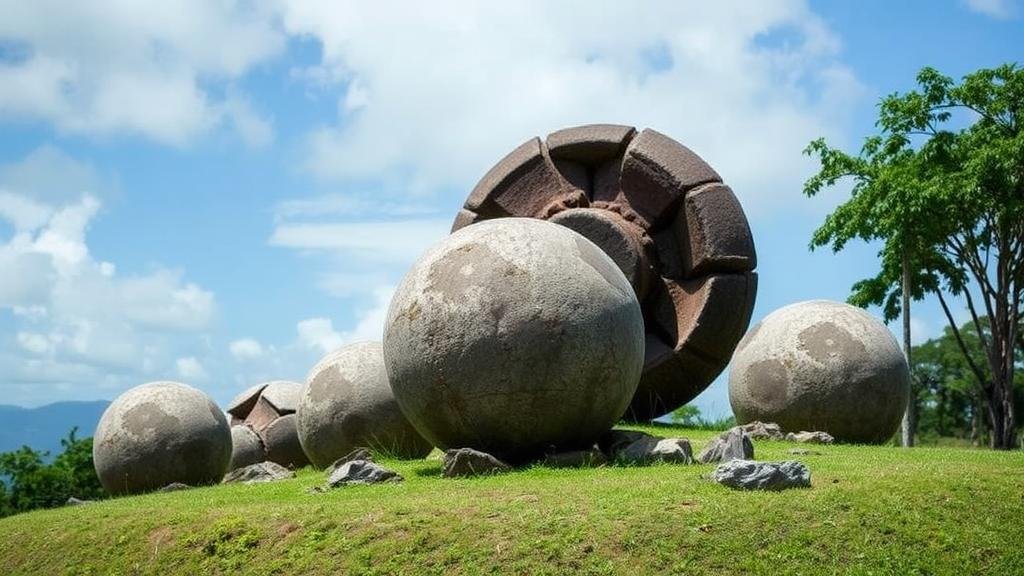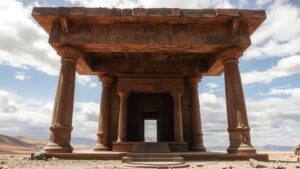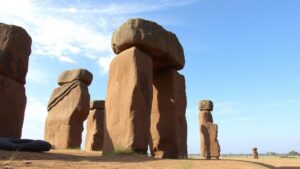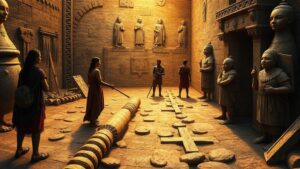Investigating the origins and purpose of the “Stone Spheres” of Costa Rica.
Investigating the Origins and Purpose of the Stone Spheres of Costa Rica
The enigmatic stone spheres of Costa Rica, known as Las Bolas, have captivated researchers and tourists alike with their unique formations and mysterious origins. Scattered throughout the DiquÃs Delta and the Isla del Caño region, these perfectly spherical stones have raised numerous questions about the people who created them and their intended purpose. This article delves into their historical context, physical characteristics, and the various theories surrounding their significance.
Historical Context
The stone spheres were discovered in the 1930s when workers for the United Fruit Company were clearing land for banana plantations. Archaeological investigations revealed that they were created by the indigenous people of Costa Rica, likely the DiquÃs culture, who thrived from approximately 500 CE to 1500 CE. The largest stone spheres measure over two meters in diameter and can weigh up to 16 tons, showcasing impressive skill in craftsmanship and engineering.
Physical Characteristics
Made primarily from granodiorite, a type of igneous rock, the stone spheres exhibit exceptional precision in their shape and size. The crafting process involved meticulous chiseling and polishing, which is a significant achievement considering the tools available at the time. spheres vary in diameter, with some as small as 10 centimeters and others towering two meters high.
Theories on Purpose
The exact purpose of the stone spheres remains a subject of debate among archaeologists and historians. Several theories have been proposed, including:
- Markers of Status: One prevalent theory posits that the spheres served as status symbols, signifying power and wealth within the DiquÃs culture. Their placement in elite spaces may indicate the important role of these objects in social hierarchies.
- Religious Significance: Another possibility is that the spheres held religious or cosmological significance. Many ancient societies would create monuments to honor deities or mark sacred spaces, making this theory plausible.
- Calendar Systems: Some researchers suggest the spheres could have been used to represent time or celestial events in a calendar system, providing a means of tracking agricultural cycles or seasonal changes.
Real-World Applications and Cultural Significance
The stone spheres continue to be an essential part of Costa Ricas cultural heritage. They are designated as a UNESCO World Heritage Site, promoting the preservation of indigenous history. Today, they attract visitors from around the globe, featuring prominently in the archaeological narrative of Mesoaerica. spheres also serve as a reminder of the innovative capabilities of early civilizations and their contributions to cultural identity.
Questions and Concerns
Despite their intrigue, several questions remain unanswered about the stone spheres. For example, how were they transported, and what tools were used to create these large objects? These uncertainties highlight the necessity for continued archaeological research and the application of modern technology, such as ground-penetrating radar, to explore buried structures and artifacts.
Actionable Takeaways
Understanding the origins and purpose of the stone spheres of Costa Rica enriches our appreciation of indigenous cultures and their achievements. For those interested in visiting, it is advisable to consider guided tours that provide in-depth information about the spheres history and cultural context. Engaging with local experts can also offer valuable insights, preserving the legacy of these remarkable artifacts for future generations.



